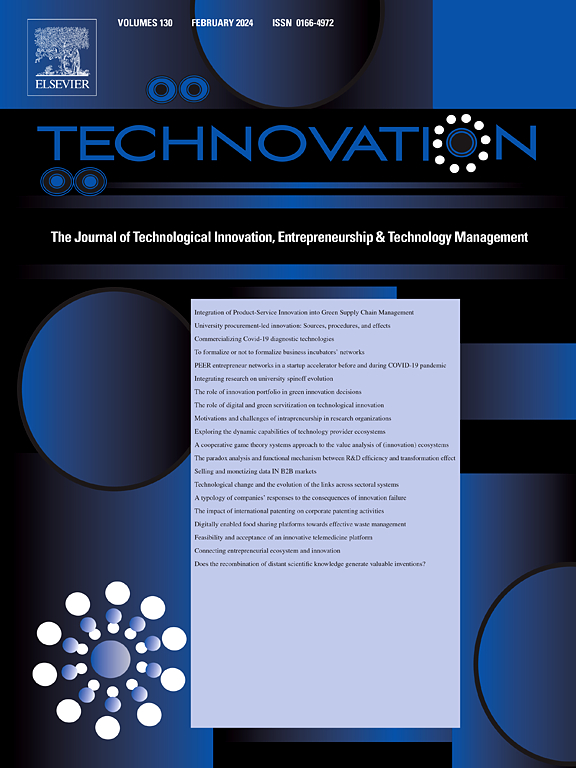The bright and dark sides of AI innovation for sustainable development: Understanding the paradoxical tension between value creation and value destruction
IF 11.1
1区 管理学
Q1 ENGINEERING, INDUSTRIAL
引用次数: 0
Abstract
This paper explores the bright and dark sides of artificial intelligence (AI) innovation for sustainable development. While most research has concentrated on the positive impacts of AI innovation, this study examines the paradoxical tension that arises between sustainable value creation and sustainable value destruction when managing AI innovation to achieve sustainable development. We conceptualize a model explaining the antecedents and the nature of this tension, and we discuss seven illustrative cases that exemplify the practical applicability of the model's elements. Our findings show that conflicting sub-objectives across environmental, social, and economic domains, along with the divergent interests of stakeholders, are key antecedents of the paradoxical tension. Furthermore, our model illustrates that sustainable value can be created by: (i) reducing grand challenges through automation in defining problems' root cause, and (ii) mitigating grand challenges through augmentation of firms' capabilities. However, we argue that sustainable value can be also destroyed when failing to address grand challenges or introducing new grand challenges. According to our study, this is due to predictable or unpredictable issues that arise during the design, development, or deployment of AI innovation. Finally, the discussion of our model further explores, through five theorical propositions, the specific elements of AI innovation that enable and amplify this paradoxical tension.
求助全文
约1分钟内获得全文
求助全文
来源期刊

Technovation
管理科学-工程:工业
CiteScore
15.10
自引率
11.20%
发文量
208
审稿时长
91 days
期刊介绍:
The interdisciplinary journal Technovation covers various aspects of technological innovation, exploring processes, products, and social impacts. It examines innovation in both process and product realms, including social innovations like regulatory frameworks and non-economic benefits. Topics range from emerging trends and capital for development to managing technology-intensive ventures and innovation in organizations of different sizes. It also discusses organizational structures, investment strategies for science and technology enterprises, and the roles of technological innovators. Additionally, it addresses technology transfer between developing countries and innovation across enterprise, political, and economic systems.
 求助内容:
求助内容: 应助结果提醒方式:
应助结果提醒方式:


